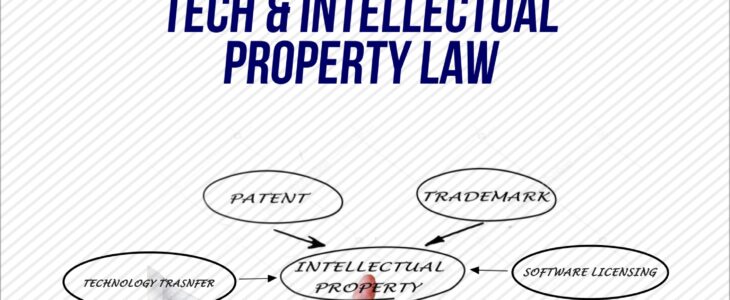
The main objectives of a copyright law are to protect the rights of the authors to ensure just reward and recognition for their intellectual efforts; and to provide appropriate limitations and exceptions to guarantee access to creative works. Copyright confers exclusive rights of exploitation to the owners of copyright under the law. The nature and extent of the exploitative rights depend on the type of the intellectual property work and the provisions of the relevant copyright law, in this case, the Copyright Act 2022.
Some of the intellectual property works that are eligible for copyright protection are discussed below with respect to the respective exploitative rights conferred on their owners by the Copyright Act of 2022:
1. Literary works: According to Section 108 of the Copyright Act 2022, literary works include, irrespective of literary quality, any of the following works or similar works:
(a) novels, stories, and poetical works;
(b) plays, stage directions, audiovisual work scenarios, and broadcasting scripts;
(c) choreographic works;
(d) computer programs;
(e) textbooks, treatises, histories, biographies, essays, and articles;
(f) encyclopedias, dictionaries, directories and anthologies;
(g) letters, reports, and memoranda;
(h) lectures, addresses, and sermons;
(i) law reports, excluding decisions of courts; and
(j) written tables and compilations, including table or compilation of data stored or embodied in a computer or any medium.
By virtue of Section 9 of the Copyright Act 2022 and subject to any statutory exceptions in Part II of the Act, the author or in the case of a joint authorship of a literary and musical work has the exclusive right to do and authorize the doing of the following:
(a) to reproduce the work;
(b) publish the work;
(c) perform the work in public;
(d) produce, reproduce, perform or publish any translation of the work;
(e) make any audiovisual work or a record in respect of the work;
(f) distribute to the public, for commercial purposes, copies of the work through sale or other transfer of ownership provided the work has not been subject to distribution authorized by the owner;
(g) broadcast the work;
(h) communicate the work to the public;
(i) make the work available to the public by wire or wireless means in such a way that members of the public can access the work from a place and at a time independently chosen by them;
(j) make any adaptation of the work; and
(k) do in relation to a translation or an adaptation of the work, any of the acts specified in relation to the work specified under this section.
2. Artistic works: Artistic work is the creation of an authentic and aesthetic expression representing a real imaginary form of graphic expression. They include paintings, drawings, diagrams, engravings or photographs, a work of architecture, crafts, pottery, woodwork, jewelry making, embroidery working, Lithographs, etchings, sculpture, graphic designs, and the like.
By virtue of S. 10(1) of the Copyright Act 2022 and subject to any statutory exceptions in Part II of the Act, the author of an Artistic work or in the case of a joint authorship, has the exclusive right to do and authorize the doing of the following:
(a) to reproduce the work;
(b) publish the work;
(c) include the work in an audiovisual work;
(d) broadcast the work;
(e) communicate the work to the public;
(f) make the work available to the public by wire or wireless means in such a way that members of the public can access the work from a place and at a time individually chosen by them;
(g) make any adaptation of the work; and
(h) do about an adaptation of the work, reproduce it, publish it and include the work in an audiovisual work.
Please note that the protection of a three dimensional work of artistic craftsmanship shall not extend to its functional aspects.
In addition, according to S.10(3) of the Copyright Act, copyright in a work of architecture shall also include the exclusive right to control the erection of any building, which reproduces the whole or a substantial part of the work either in its original form or in any form recognizably derived from the original, but does not include the right to control the reconstruction in the same style as the original of a building to which the copyright relates.
3. Audiovisual works: An audiovisual work is a series of related images that are capable of being shown by some device, along with any sounds that accompany the visual portion of the work. The audiovisual works category includes movies and films, as well as slide shows, video games, skits, blogs, voiceovers, webinars, and the like.
By virtue of S. 11 of the Copyright Act 2022 and subject to any statutory exceptions in Part II of the Act, the author of an Audiovisual work or in the case of a joint authorship, has the exclusive right to do and to authorize the doing of the following;
(a) to reproduce the audiovisual work;
(b) cause the audiovisual work that consists of visual images to be seen in public and of sounds to be heard in public;
(c) communicate the audiovisual work to the public;
(d) broadcast the audiovisual work;
(e) make any copy of the sound track of an audiovisual work;
(f) make the work available to the public by wire or wireless means in such a way that members of the public are able to access the work from a place and at a time independently chosen by them;
(g) distribute to the public, for commercial purposes, copies of the work, through sale or other transfer of ownership provided the work has not been subject to distribution authorised by the owner;
(h) make an adaptation of the audiovisual work;
(i) make a translation of the audiovisual work or any part;
(j) do in relation to a translation or an adaptation of the work, any of the acts specified in relation to the work under this section.
4. Sound recordings: Sound recordings means any exclusively aural fixation of the sounds of a performance or other sounds, regardless of the method by which the sounds are fixed or the medium in which the sounds are embodied. It does not include a fixation of sounds and images, such as the sounds incorporated in an audiovisual work.
By virtue of S. 12 of the Copyright Act 2022 and subject to any statutory exceptions in Part II of the Act, the author of a sound recording work or in the case of joint authorship, has the exclusive right to do and authorize the doing of the following:
(a) reproduce the sound recording;
(b) broadcast the sound recording;
(c) communicate the sound recording to the public;
(d) make the sound recording available to the public by wire or wireless means in such a way that members of the public can access the sound recording from a place and at a time independently chosen by them;
(e) distribute to the public for commercial purposes, copies of the sound recording, either by way of rental, lease, hire, loan or similar arrangement; or
(f) distribute to the public, for commercial purposes, copies of the work, through sale or other transfer of ownership provided the work has not been subject to distribution authorized by the owner.
5. Broadcasts: Broadcasts means the transmission by wireless means of sounds or images or both, in such a manner as to cause such images or sounds to be received by the public. By virtue of S. 13(1) of the Copyright Act 2022 and subject to any statutory exceptions in Part II of the Act, the author of a Broadcasts work or in the case of a joint authorship, has the exclusive right to do and authorize the doing of the following:
(a) rebroadcasting of the broadcast;
(b) communication to the public of the broadcast;
(c) making the broadcast available to the public by wire or wireless means in such a way that members of the public can access the work from a place and at a time independently chosen by them;
(d) fixation of the broadcast;
(e) reproduction of a fixation of the broadcast;
(f) adaptation of a fixation of the broadcast; or
(g) distribution of a fixation of the broadcast or copies for commercial purposes by way of rental, lease, hire, loan or similar arrangement.
Please note that the copyright in a television broadcast shall include the right to control the taking of still photographs from the broadcast. See Section 13(2) of the Copyright Act 2022. However cable operators who merely retransmit the broadcasts of broadcasting organizations shall not be entitled to the exclusive rights provided for in subsection (1) in respect of the broadcasts retransmitted.
********************************************************
About KORIAT & CO.
We are a commercial law firm with head office in Lagos, Nigeria. We assist clients from different nationalities in company registration and processing of business licence in Nigeria, Ghana, Kenya and Rwanda. We also provide company secretarial services and general legal support for registered businesses.
The above article is not legal advice and does not automatically make our readers our clients unless they specifically instruct us to act or represent them in any way.
Please contact Koriat & Co. through admin@koriatlaw.com or 09067842241 (WhatsApp) if you require additional information on the above subject or any assistance in registering a company or processing a business licence in all sectors.




